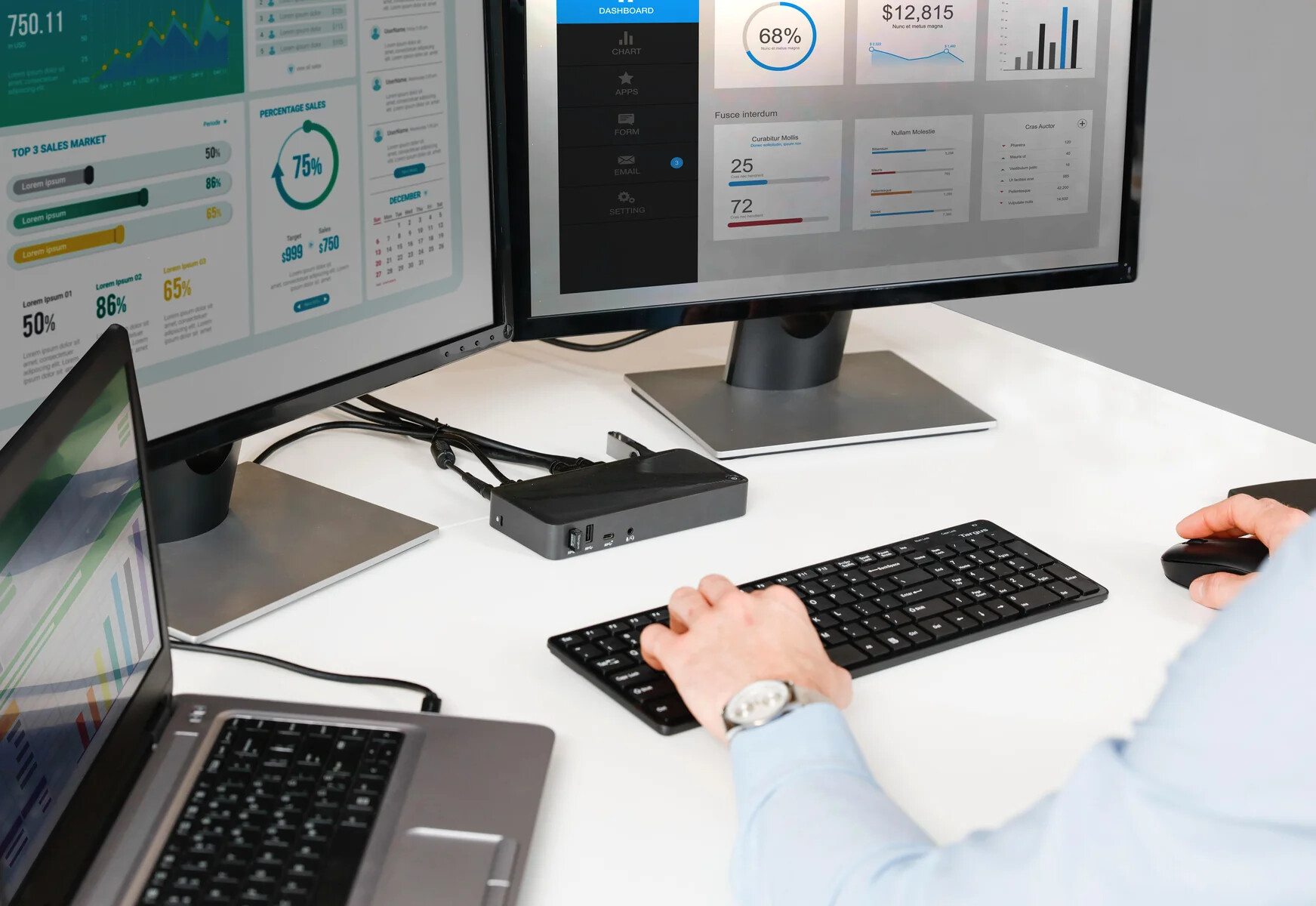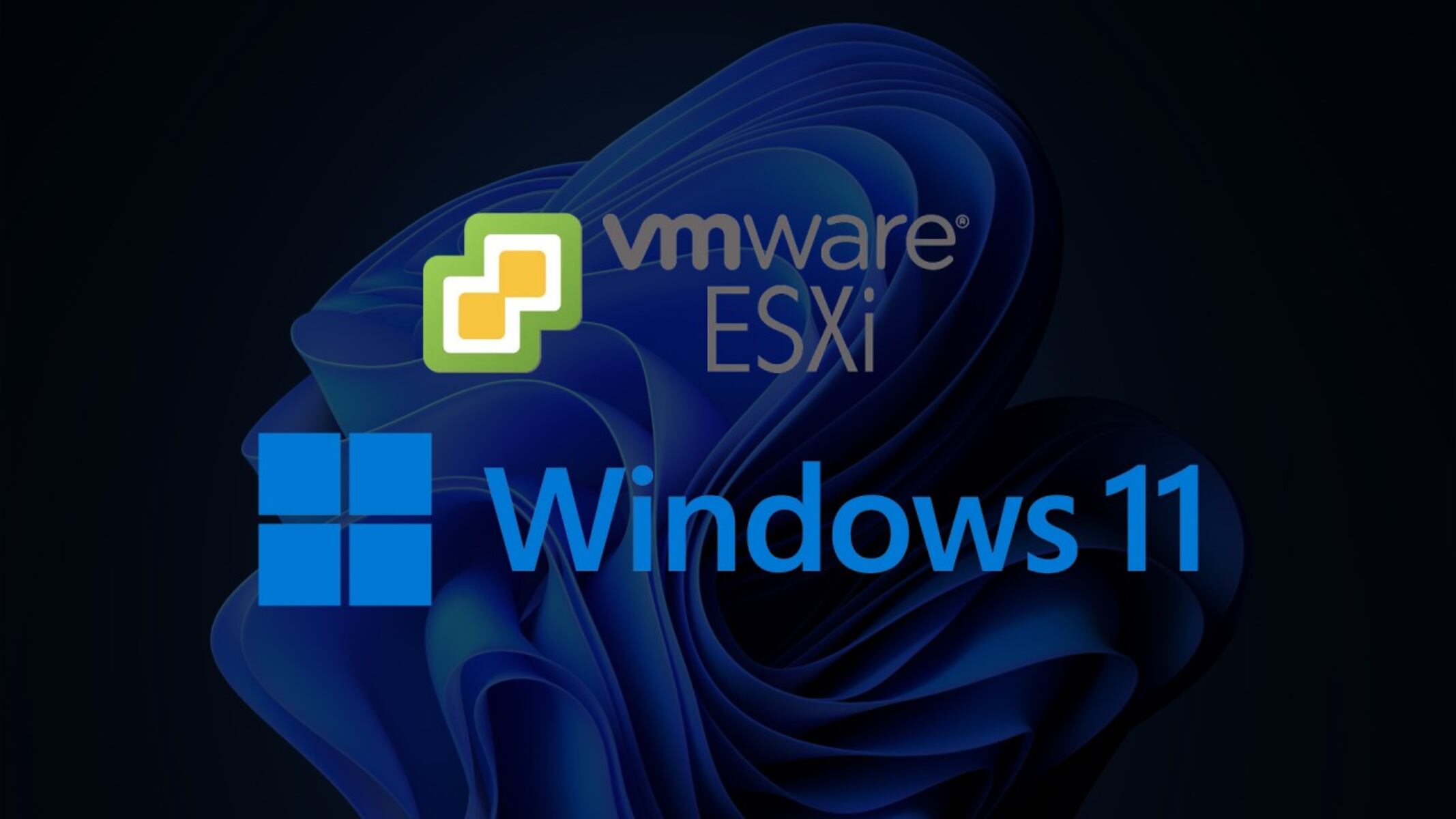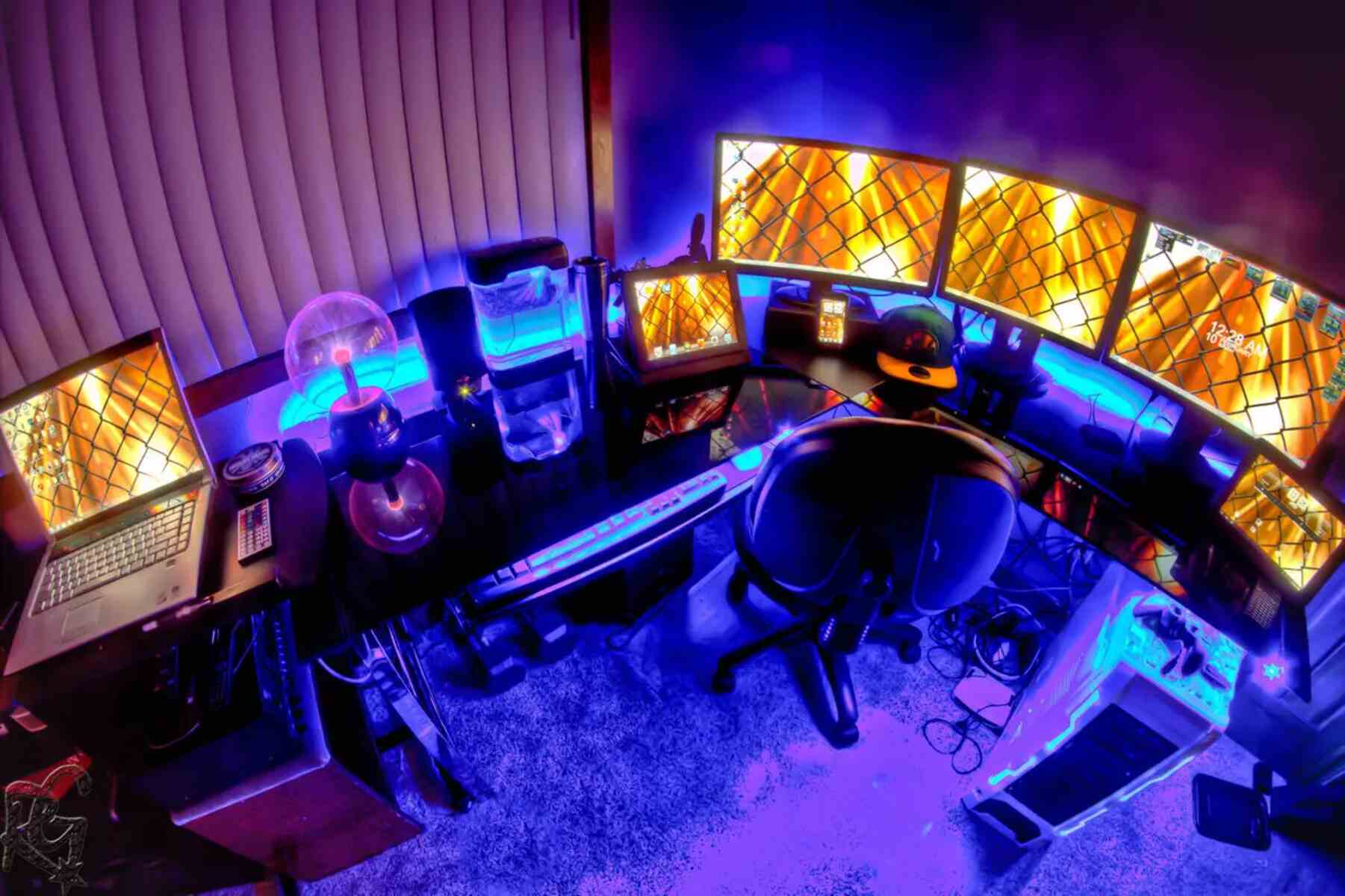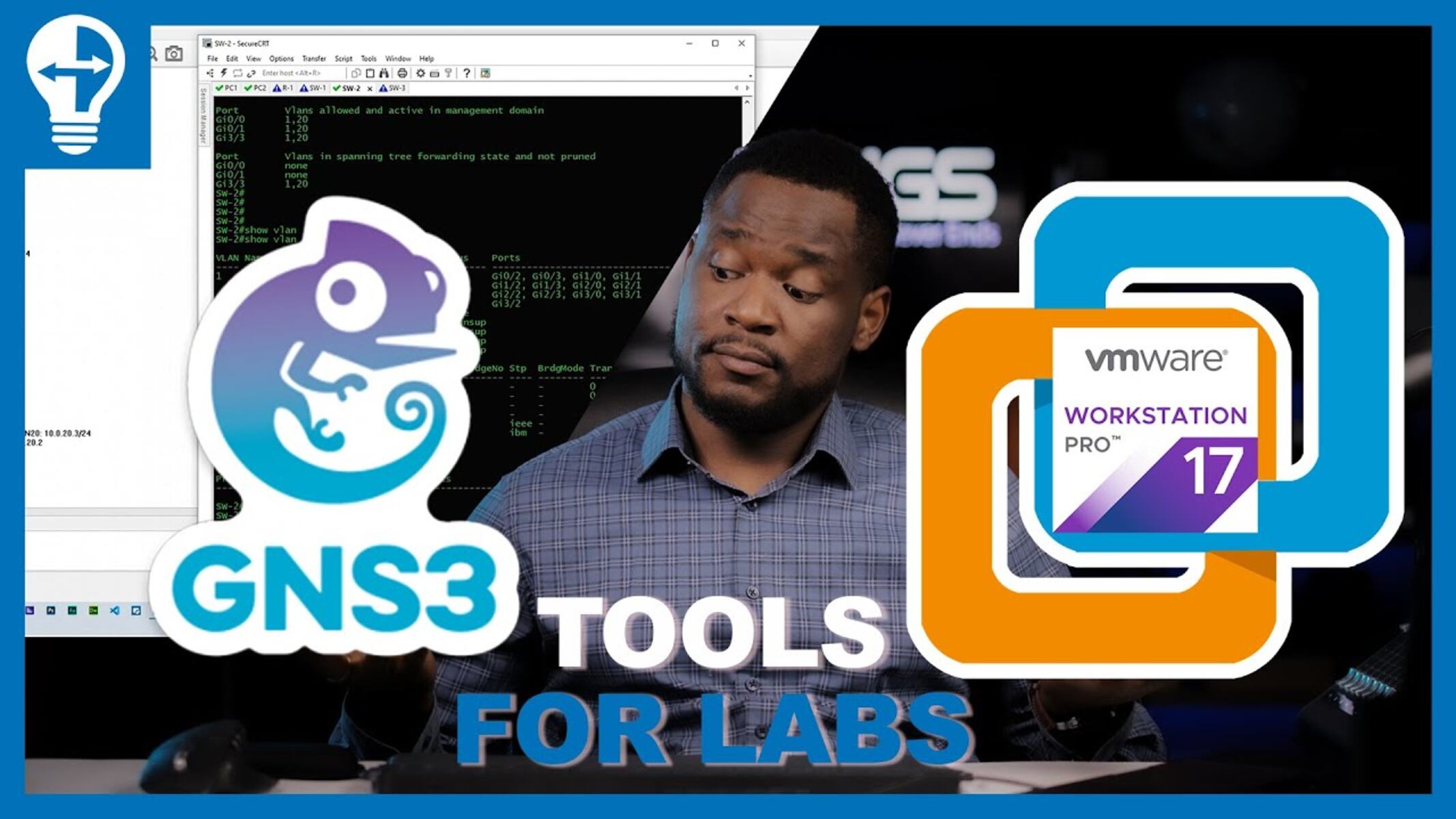Introduction
A dockable workstation is a powerful tool that allows you to transform your laptop into a desktop-like setup. This versatile solution provides you with the convenience of a portable device while offering the functionality and productivity of a traditional desktop computer. Whether you’re a student, professional, or remote worker, a dockable workstation can greatly enhance your workflow and improve your overall efficiency.
With a variety of options available in the market, choosing the right docking station can be a daunting task. Factors such as compatibility, port availability, and performance are crucial considerations to ensure a seamless integration with your laptop and peripherals. Additionally, setting up the hardware correctly and adjusting the docking station settings according to your preferences are essential steps for optimal usage.
Once you have successfully set up your dockable workstation, you can customize it to suit your needs and enhance your productivity. Whether it’s connecting multiple monitors for a multi-display setup, attaching external storage devices, or configuring your audio and network preferences, the possibilities for customization are endless.
However, it’s not uncommon to encounter some issues or challenges along the way. Troubleshooting common problems that may arise with docking stations is essential to ensure smooth functionality and uninterrupted workflow.
In this article, we will guide you through the process of creating your own dockable workstation. We will cover everything from choosing the right docking station to troubleshooting common issues that may arise. By the end of this article, you will be equipped with the knowledge and skills to create a customized and efficient workstation that fits your needs and enhances your productivity.
Choosing the Right Docking Station
When it comes to selecting a docking station for your laptop, there are several factors to consider. The right docking station can greatly enhance your productivity by providing seamless connectivity and expanding your laptop’s capabilities. Here are a few key factors to keep in mind when choosing the right docking station:
- Compatibility: Make sure that the docking station you choose is compatible with your laptop’s make and model. It should support the necessary connectivity options, such as USB-C, Thunderbolt, or HDMI, depending on your laptop’s ports.
- Ports and Connectivity: Consider the number and types of ports offered by the docking station. Look for a docking station that has a variety of ports, including USB, HDMI, Ethernet, and audio ports, to accommodate your devices and peripherals.
- Power Delivery: If you want to charge your laptop while it’s docked, make sure that the docking station supports power delivery. This feature allows you to connect your laptop to the docking station and charge it at the same time, eliminating the need for separate charging cables.
- Performance: Consider the performance capabilities of the docking station. Look for features such as support for multiple monitors, high-resolution display output, and fast data transfer speeds to ensure smooth and seamless usage.
- Brand and Reviews: Research different brands and read customer reviews to gauge the reliability and performance of the docking station. Look for brands that have a good reputation for producing high-quality docking stations that are compatible with various laptops.
It’s also worth considering your specific needs and requirements. If you primarily work with graphics-intensive applications or require a multi-monitor setup, look for a docking station that can support these requirements. If you frequently travel and need a portable solution, consider a compact and lightweight docking station that is easy to carry.
By carefully considering these factors and evaluating your specific needs, you can choose the right docking station that will seamlessly integrate with your laptop and enhance your workstation setup. Remember to check for compatibility, connectivity options, power delivery, performance capabilities, and customer reviews to make an informed decision.
Setting Up the Docking Station Hardware
Once you have chosen the right docking station for your laptop, it’s time to set up the hardware for your dockable workstation. Follow these steps to ensure a smooth and successful setup:
- Gather the necessary cables and peripherals: Make sure you have all the required cables and peripherals ready, such as power cables, display cables, Ethernet cables, and any other devices you plan to connect to the docking station.
- Connect the docking station to an external power source: Plug in the power adapter for the docking station and connect it to a power outlet. Ensure that the docking station is receiving power.
- Connect your laptop to the docking station: Depending on the type of docking station and your laptop’s ports, connect your laptop to the docking station using the appropriate cable (USB-C, Thunderbolt, or proprietary connector).
- Connect external monitors: If you’ll be using multiple monitors, connect them to the docking station using the appropriate display cables (HDMI, DisplayPort, or VGA). Make sure to configure the display settings on your laptop to utilize the additional monitors.
- Connect other peripherals: Connect any other peripherals you have, such as a keyboard, mouse, external hard drives, or USB devices, to the available ports on the docking station. This will allow you to conveniently use these devices without the hassle of connecting them directly to your laptop.
- Configure your laptop’s settings: Depending on your operating system, you may need to adjust the display settings, audio settings, and network settings to ensure they are optimized for the docked workstation.
- Test the connectivity: Once everything is connected, test the connectivity by accessing the peripherals and ensuring that the external monitors display properly. Troubleshoot any issues that may arise.
It’s worth noting that the specific steps for setting up the hardware may vary depending on the docking station model and your laptop’s specifications. Always refer to the manufacturer’s instructions for detailed guidelines.
By following these steps and ensuring that all the necessary connections are properly made, you will have successfully set up the hardware for your dockable workstation. Now, it’s time to move on to adjusting the settings to optimize your workstation’s performance.
Connecting Your Laptop to the Docking Station
Once you have set up the hardware for your dockable workstation, the next step is to connect your laptop to the docking station. Follow these steps to ensure a proper connection:
- Ensure your laptop is powered off: Before connecting your laptop to the docking station, make sure it is powered off to avoid any potential issues or damage.
- Locate the appropriate port on your laptop: Depending on your laptop’s make and model, locate the port that is compatible with the docking station. This may be a USB-C, Thunderbolt, or proprietary connector.
- Insert the connector into the port: Gently insert the connector into the port on your laptop. Make sure it is securely connected.
- Power on your laptop: Once the connector is properly inserted, power on your laptop and wait for it to boot up.
- Configure the display settings: Depending on your operating system, you may need to configure the display settings to extend or duplicate the display onto the external monitors connected to the docking station. Access the display settings and adjust them according to your preferences.
- Test the connection: Open up a program or document on your laptop and verify that it appears on the external monitors. You can also test the connectivity of other peripherals connected to the docking station, such as the keyboard, mouse, or external drives.
If you encounter any issues during the connection process, try the following troubleshooting steps:
- Ensure that the docking station is powered on and receiving power.
- Check that the connector is inserted properly into the laptop’s port.
- Update the drivers for the docking station and your laptop’s graphics card.
- Restart your laptop and try connecting it to the docking station again.
- If possible, test the docking station with another laptop to check if the issue lies with the docking station or your laptop.
By following these steps and troubleshooting any connection issues that may arise, you will be able to successfully connect your laptop to the docking station and start enjoying the benefits of your dockable workstation.
Adjusting the Docking Station Settings
After connecting your laptop to the docking station, it’s important to adjust the settings to optimize the functionality and performance of your dockable workstation. Here are some key settings you may need to adjust:
- Display Settings: Access the display settings on your laptop and configure them according to your preferences. You can choose the display mode (extend, duplicate, or single) and adjust the resolution and orientation of the external monitors connected to the docking station.
- Audio Settings: If you have connected external speakers or headphones to the docking station, make sure to select the correct audio output source in your laptop’s audio settings. You may also need to adjust the volume levels to your desired settings.
- Network Settings: If you are using an Ethernet connection, check the network settings on your laptop and make sure it is configured to use the Ethernet connection provided by the docking station. You can also configure Wi-Fi settings if applicable.
- Power Settings: Depending on your laptop and docking station, you may have options to adjust power settings. This can include enabling or disabling power delivery to charge your laptop while it’s docked, adjusting power-saving modes, or customizing power management settings.
- Peripheral Settings: If you have connected external devices such as a keyboard, mouse, or external drives, configure their settings according to your preferences. This can include customizing keyboard shortcuts, adjusting mouse sensitivity, or configuring backup options for external drives.
- Update Drivers and Firmware: Make sure to regularly check for firmware and driver updates for both your laptop and the docking station. Keeping your system up to date can resolve compatibility issues, improve performance, and ensure the smooth operation of your dockable workstation.
It’s important to note that the specific settings and options available may vary depending on your laptop’s operating system and the features supported by your docking station. Refer to the manufacturer’s instructions or the respective software settings to explore and adjust the settings available to you.
Take the time to customize the settings to your liking and make sure everything is in proper working order. This will help ensure that your dockable workstation operates smoothly and according to your preferences.
Customizing Your Dockable Workstation
One of the major benefits of a dockable workstation is the ability to customize it to fit your specific needs and preferences. By personalizing your dockable workstation, you can create an environment that maximizes your productivity and enhances your workflow. Here are some ways you can customize your workstation:
- Multi-display setup: If your docking station supports multiple monitors, take advantage of this feature to create a spacious and efficient workspace. Arrange your external monitors according to your workflow and adjust the resolution, orientation, and positioning as needed.
- Ergonomics: Consider the ergonomics of your workstation by adjusting the height and angle of your external monitors, keyboard, and mouse. Incorporate a comfortable chair and proper lighting to create a workspace that minimizes strain and promotes good posture.
- Peripheral devices: Customize the settings of your keyboard, mouse, and other peripheral devices connected to the docking station. Explore the software or settings options provided by these devices to configure shortcuts, sensitivity, or scrolling preferences, ultimately enhancing your overall efficiency.
- External storage: If you require additional storage, connect external hard drives or SSDs to your docking station. Customize the setup by creating folders, organizing files, and setting up automated backup processes to keep your data safe and easily accessible.
- Docking station profiles: Some docking stations offer the ability to save and switch between different profiles. Create different profiles for various tasks or work modes, such as “office mode” for a dual-monitor setup or “presenting mode” with specific display and audio settings, enabling you to seamlessly switch between different workstation configurations.
- Customized shortcuts and automation: Explore software options that allow you to create customized shortcuts or automate repetitive tasks. This can save you time and streamline your workflow by allowing you to perform complex actions with a simple key combination or automated script.
- Personal touches: Customize your dockable workstation with personal touches to make it feel more welcoming and inspiring. Add decorations, plants, or artwork that reflect your personality and create a positive and motivating environment.
Remember, the possibilities for customization are endless, and the goal is to create a workspace that’s tailored to your specific needs and preferences. Experiment with different setups, try out new tools and software, and continuously refine your workstation to optimize your productivity.
By taking the time to customize your dockable workstation, you can create a workspace that not only meets your functional requirements but also inspires creativity and enhances your overall work experience.
Troubleshooting Common Issues with Docking Stations
While dockable workstations offer numerous benefits, it’s not uncommon to encounter some issues or challenges along the way. Here are some common problems that you may encounter with docking stations and tips on how to troubleshoot them:
- No display on external monitors: If your external monitors are not displaying any content, double-check the connections between the docking station and the monitors. Ensure that the display cables are securely connected and that the monitors are powered on. Additionally, verify that the display settings on your laptop are correctly configured to extend or duplicate the display onto the external monitors.
- Audio problems: If you are experiencing audio issues, start by checking the audio settings on your laptop. Ensure that the correct audio output source is selected. If you are using external speakers or headphones, confirm that they are properly connected to the docking station. You may also try updating the audio drivers on your laptop and restarting the system.
- USB connectivity issues: If your USB devices are not working properly when connected to the docking station, check the USB connections. Make sure the USB cables are securely plugged into the docking station and that the devices are recognized by your laptop. If necessary, update the USB drivers on your laptop and ensure that the docking station is compatible with your USB devices.
- Power delivery problems: If your laptop is not charging or receiving power from the docking station, verify that the power adapter is connected correctly and supplying power to the docking station. Make sure the power cable is securely connected to both the docking station and the power outlet. If the issue persists, try a different power outlet or contact the manufacturer for further assistance.
- Network connectivity issues: If you are having trouble with the network connection through the docking station, ensure that the Ethernet cable is properly connected to the docking station and your router. Check the network settings on your laptop and make sure they are configured to use the Ethernet connection provided by the docking station. If you are using Wi-Fi, ensure that the network settings are correctly configured.
- Compatibility conflicts: In some cases, there may be compatibility issues between your laptop and the docking station. Check the compatibility requirements of both devices and ensure that they are compatible with each other. If necessary, update the firmware or drivers for both your laptop and the docking station to ensure compatibility.
- Overheating issues: Docking stations can generate heat, especially if you are using power-hungry devices or charging multiple devices simultaneously. Make sure the docking station is placed in a well-ventilated area and not obstructed by any objects. If overheating becomes a recurring issue, consider using a laptop cooling pad or contacting the manufacturer for further guidance.
If you continue to experience issues with your docking station despite troubleshooting, refer to the manufacturer’s documentation or contact their customer support for further assistance. They may have additional troubleshooting steps or be able to provide specific guidance based on your particular setup.
By addressing common troubleshooting issues with docking stations, you can resolve any obstacles that may arise and maintain a smoothly functioning dockable workstation that enhances your productivity and efficiency.
Conclusion
Creating a dockable workstation can greatly enhance your productivity and convenience, allowing you to transform your laptop into a versatile desktop-like setup. By carefully choosing the right docking station, setting up the hardware correctly, and adjusting the settings to your preferences, you can create a personalized workstation that caters to your specific needs.
When selecting a docking station, consider factors such as compatibility, port availability, power delivery, and performance. This will ensure that the docking station seamlessly integrates with your laptop and provides the necessary connectivity options for your peripherals.
Setting up the hardware involves connecting the docking station to a power source, attaching the laptop, connecting external monitors and peripherals, and configuring the necessary settings. Adjusting the settings encompasses configuring display, audio, network, power, and peripheral settings to optimize your workstation’s performance and functionality.
Customizing your dockable workstation allows you to tailor it to your preferences, whether it’s creating a multi-display setup, optimizing ergonomics, or personalizing peripherals. Through customization, you can optimize your workspace for productivity and create an environment that inspires and motivates you.
Despite your best efforts, you may encounter common issues such as display problems, audio issues, USB connectivity problems, power delivery issues, network connectivity issues, compatibility conflicts, or overheating. By troubleshooting these issues and seeking assistance from the manufacturer if needed, you can overcome these obstacles and maintain smooth operation of your dockable workstation.
In conclusion, creating a dockable workstation requires careful consideration of the docking station, proper hardware setup, adjustment of settings, customization, and troubleshooting potential issues. By following the steps outlined in this article, you can set up a dockable workstation that maximizes your productivity, enhances your workflow, and ultimately improves your overall work experience.

























